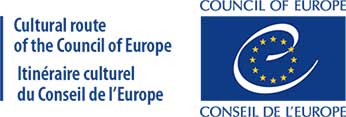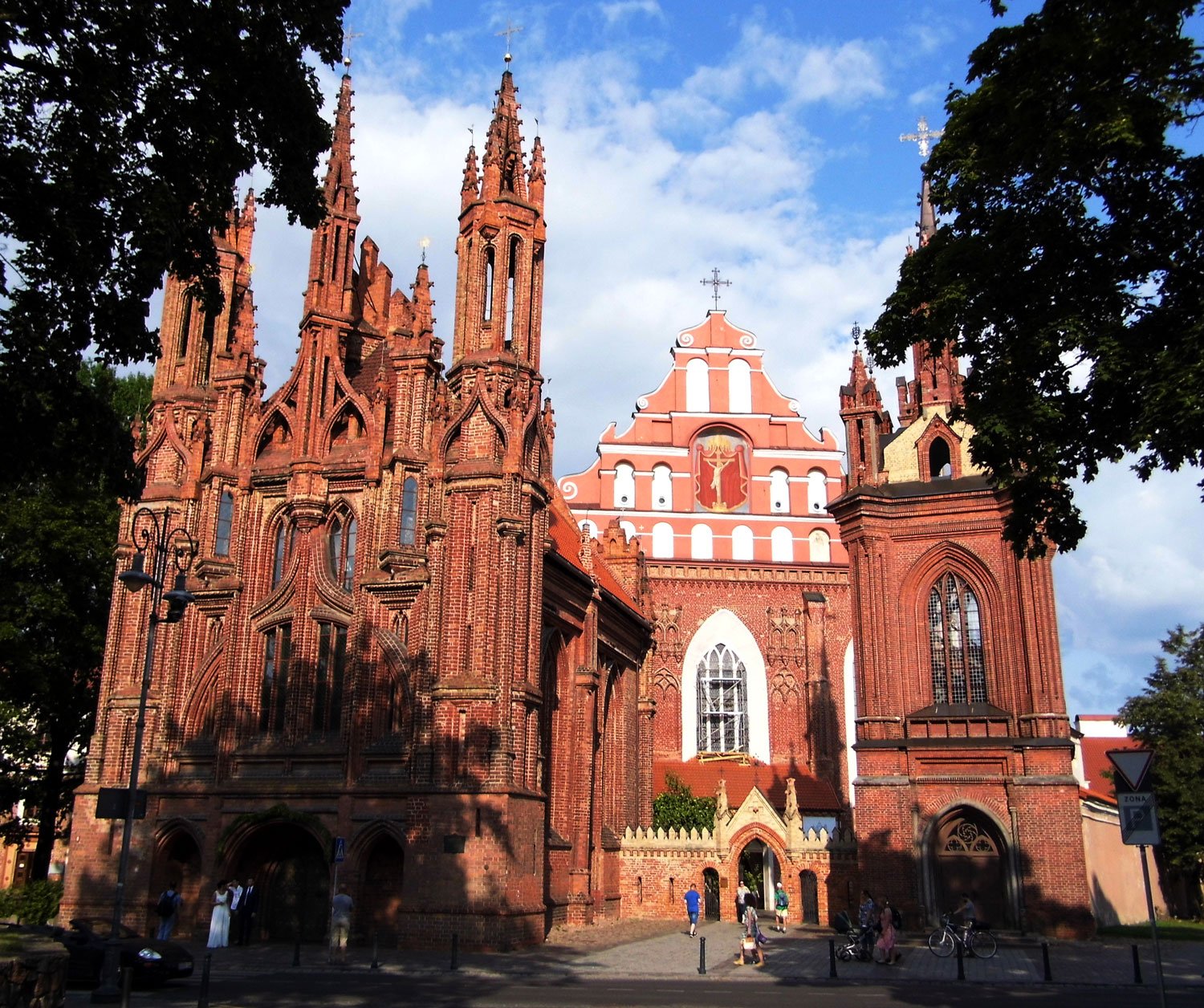
Roadmap
of the 6th Annual Advisory Forum on Cultural Routes
Vilnius, Lithuania, 26-27 October 2016
Expanding the Cultural Routes of the Council of Europe: challenges and opportunities
The Enlarged Partial Agreement on Cultural Routes of the Council of Europe (EPA) was established in December 2010 and enables closer co-operation between states particularly interested in the development of Cultural Routes.
The EPA Strategies 2016-2020 was presented to the Governing Board of the Enlarged Partial Agreement on Cultural Routes of the Council of Europe, discussed and approved during its 14 April 2016 meeting.
The Annual Advisory Forum is the most important and significant annual event of the Cultural Routes of the Council of Europe programme and it is the occasion to debate priorities, review progress with the implementation of the Cultural Routes, share experiences. Each Forum provides also the occasion to discuss and give guidelines on how to implement the EPA strategies, focusing each year on different topics.
The Vilnius Forum 2016 - “Expanding the Cultural Routes of the Council of Europe: challenges and opportunities”, is focused on two major themes, considered strategic priorities by the Governing Board of the EPA:
1 - Expanding geographic coverage and partnerships;
2 - Developing new themes and topics.
As an outcome of the Forum, this roadmap composed by a set of actions is proposed to implement each topic in the daily activities of the stakeholders involved in the Programme, in particular EPA secretariat /European Institute of Cultural Routes, EPA Member states, certified Cultural Routes of the Council of Europe, Cultural Routes of the Council of Europe University Network, International Organisations potentially observer of the EPA Governing Board.
THEME 1 EXPANDING GEOGRAPHIC COVERAGE AND PARTNERSHIPS
Certified Cultural Routes of the Council of Europe and new projects have strategies to extend their networks to new countries, involving new cities and regions, reinforcing relationships with stakeholders and partners at local, regional, nation al level, in coherence with their themes.
Similarly Countries involved and interested in the Cultural Routes Programme, in particular those member of the Enlarged Partial Agreement, support and encourage the expansion of existing cultural routes and the development of new projects on their territory through specific policies and initiatives.
Comparing these approaches allow envisaging new synergies and sharing strategies between Cultural Routes networks and national decision makers.
A particular focus is devoted to provide examples from the Baltic Region, Eastern Europe, South-East Europe and the Euro-Mediterranean Region.
Challenges and opportunities linked to these trends were explored.
Proposed actions for implementation
ACTION 1 – Visibility of the Cultural Routes of the Council of Europe at the European and National level.
Geographical coverage can be improved by giving more visibility to the Cultural Routes of the Council of Europe programme at the National level, using different tools, encouraging a common work among EPA secretariat/ EICR, EPA Member states and certified Cultural Routes of the Council of Europe.
EPA secretariat /European Institute of Cultural Routes
1 - Preparation of a toolkit for the EPA’s Member States containing coherent information to be published on the official websites of the specialised Ministries and National Tourism Offices.
2 - Calling on Member States to prepare language versions of the statutory texts and of the key basic information (i.e. CM/Res on EPA and Cultural Routes’ programme, leaflets, text for websites,…).
3 - Propose that Ministries in EPA Member States establish a dedicated office to promote cultural routes (as for UNESCO World Heritage Sites)
4 - Promoting the Cultural Routes programme at the European level (for a, events,…).
EPA Member states
1 - Dissemination of the brochure presenting the programme and listing the certified Cultural Routes per country;
2 - Creation of events at the national level giving visibility to Cultural Routes of the Council of Europe, already and not yet involving the country;
3 - Supporting the preparation of language versions of statutory texts and key basic information (i.e. CM/Res on EPA and Cultural Routes’ programme, leaflets, text for websites,…).
Cultural Routes of the Council of Europe
1 - Dissemination of the brochure presenting the programme and listing the certified Cultural Routes per country;
2 - Involvement of National representatives during events and meetings.
3 - Use of the logo of the Council of Europe following the guidelines on the use of the logo on the communication documents and tools of the Route (website, brochures,….).
ACTION 2 – Geographical extension of the Cultural Routes programme
Cultural Routes of the Council of Europe are a living network, and are constantly developing each year attracting new members.
EPA secretariat /European Institute of Cultural Routes will
1 - Facilitate contacts between Member States to support the certified Cultural Routes in expanding their networks and to further develop the Cultural Routes Programme;
2 - Stimulate common strategies and policies to support geographical extension and partnership building.
EPA Member States will
1 - Facilitate contacts between certified Cultural Routes interested in expanding their networks and local stakeholders as potential members of the Routes ;
2 - Develop and support common strategies and policies at the national level to support geographical extension and partnership building;
3 - Inform regional authorities about the Cultural Routes of the Council of Europe that potentially involve their territories.
Cultural Routes of the Council of Europe will
1 - Inform the EPA secretariat /European Institute of Cultural Routes about the Countries they seek to involve in their networks;
2 - Work with National Authorities on the expansion;
3 - Support the involvement of Countries involved in the Routes but not yet members of the EPA so they may join the Cultural Routes programme.
Cultural Routes of the Council of Europe University Network will
1 - Support and advise on the extension of the programme from a scientific and methodological point of view;
2 - Work to enlarge the University Network of Cultural Routes by involving Universities coming from all Countries engaged with the Cultural Routes Programme
ACTION 3 – Develop new Cultural Routes themes
EPA secretariat /European Institute of Cultural Routes
1 - Collecting proposals of new themes for Cultural Routes from the EPA’s Member States;
2 - Facilitating contacts between Cultural Route projects and Countries potentially involved in the networks.
EPA Member states
1 - Proposing new themes for Cultural Routes to the EPA’s secretariat/EICR;
2 - Supporting Cultural Route projects involving the Country.
Cultural Routes of the Council of Europe
1 - Supporting peer-to-peer exchanges and mentoring with Cultural Route projects, according to the theme and geographical coverage.
Cultural Routes of the Council of Europe University Network
1 - Supporting from a scientific and methodological point of view the implementation of Cultural Route projects.
THEME 2 - DEVELOPING NEW THEMES AND TOPICS
Cultural Routes of the Council of Europe offer a range of opportunities for the development of innovative practices in different fields, promoting the values of the Council of Europe. ICT, new forms of social commitment, peer economies applied to Cultural and sustainable tourism allow Cultural Route networks to reach new audiences and to develop coherent branding and marketing tools at the local and at the European level. The issue of measuring the socio-economic and touristic impact of cultural routes should be further developed.
ICT can help to extend access, especially of young generations, can better the experience of travellers, help connect locals with their routes, and locals with visitors, dis-intermediate some relationships, they can also be used to train relevant players, especially micro enterprises.
These projects open to developing and maintaining cooperation with European institutions, organisations and networks. At the same time, they promote an active participation of inhabitants in the activities of Cultural Routes and give travellers the opportunity to experience the values of the Council of Europe during their trip.
The role of tourism operators, European networks and stakeholders interested active in the fields of cultural tourism, shared economies, sustainability and accessibility was also presented.
The three Sessions of Workshop 2 were focused on specific themes: sustainable and cultural tourism, media and new technologies, new audiences.
In each Session, Cultural Routes and representatives of institutions, networks and associations active in the field presented perspectives and challenges through practical examples.
Proposed actions for implementation
ACTION 1 - Building bridges and reinforcing relationships with partners on Cultural Routes at the international and European level
International and European organisations, networks and NGOs can play a key role for the development and the reinforcement of new themes and topics for Cultural Routes of the Council of Europe.
EPA secretariat /European Institute of Cultural Routes will
1 - Develop relationships with international and European key organisations, networks and NGOs for Cultural Routes of the Council of Europe;
2 - Define the status of EPA observer and/or affiliated members for those partners;
3 - Plan common actions and projects to develop and reinforce new themes and topics, according to the missions of each organisation.
EPA Member states will
1 - Define the status of EPA observer and/or affiliated members for those partners;
2 - Develop and support common actions and initiatives at the international and European level with selected key organisations, networks, NGOs and the private sector.
Cultural Routes of the Council of Europe will
1 - Develop and support common actions and initiatives at the international and European level with selected key organisations, networks and NGOs and the private sector.
Cultural Routes of the Council of Europe University Network will
1 - Stimulate exchanges and joint studies on CRs among universities part of the network, member states, CRs and partner organisations and networks.
International and European organisations, networks and NGOs will
1 - Participate in the work of the EPA once the status of observer and/or affiliated members defined;
2 - Plan common actions and projects to develop and reinforce new themes and topics, according to the missions of the organisation.
ACTION 2: Relationships at the national and regional level
The national and regional levels play a very important role in the development of policies for the Cultural Routes. The development of transnational macro-regional strategies for cultural routes should also be pursued.
Joint innovative actions with the national representatives of international and European organisations, networks and NGOs can be proposed.
EPA secretariat /European Institute of Cultural Routes will
1 - Propose to Member States to include the Cultural Routes of the Council of Europe in their national and regional policies
2 - Suggest to Member States to organise an annual inter-ministerial meeting with the participation of Cultural Routes of the Council of Europe present in the country.
3 - Give visibility to pilot initiatives at the local and regional level involving Cultural Routes of the Council of Europe and international and European key organisations, networks and NGOs (i.e. UNESCO national commissions, UNWTO, Eurovelo, …).
EPA Member states will
1 - Develop and reinforce relationships with the national representatives of international and European key organisations, networks and NGOs;
2- Develop and support common actions and initiatives at the national level with national representatives of selected key organisations, networks and NGOs;
3 - Develop and reinforce relationships with key organisations, networks and NGOs at the national level;
4 - Facilitate contacts between key organisations, networks and NGOs at the national level and certified Cultural Routes of the Council of Europe.
Cultural Routes of the Council of Europe will
1 - Develop and support common actions and initiatives at the national level with selected key organisations, networks and NGOs.
Cultural Routes of the Council of Europe University Network will
1 - Stimulate exchanges and joint studies on CRs among universities part of the network, member states, CRs and partner organizations and networks.
International and European organisations, networks and NGOs will
1 - Develop and reinforce relationships with the representatives of the EPA Member states;
2 - Develop and support common actions and initiatives at the national level, according with the mission of the organisation;
3 - Strengthen contacts with certified Cultural Routes of the Council of Europe.





